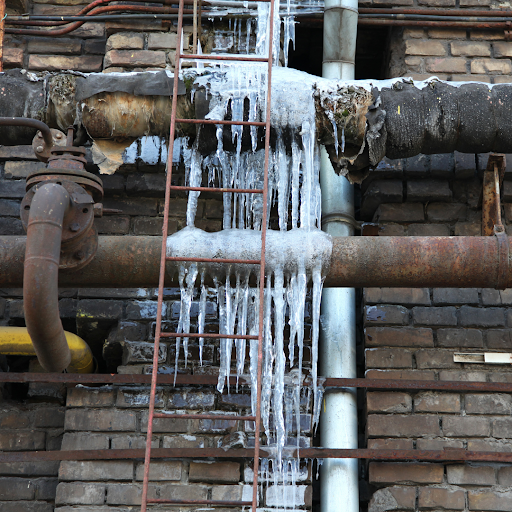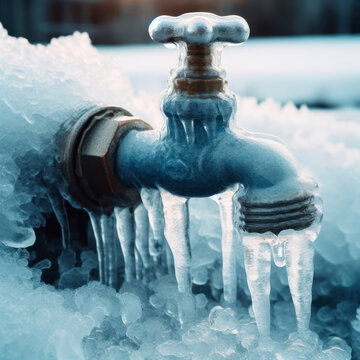Protecting Your Pipes from Cold Weather Issues: Key Tips
Protecting Your Pipes from Cold Weather Issues: Key Tips
Blog Article
Do you find yourself hunting for answers concerning Prevent Frozen Pipes ?

Winter can damage your pipes, especially by freezing pipes. Below's exactly how to stop it from taking place and what to do if it does.
Intro
As temperatures drop, the danger of icy pipes rises, possibly bring about pricey repair services and water damage. Understanding how to prevent frozen pipelines is crucial for home owners in cold environments.
Prevention Tips
Shielding at risk pipelines
Wrap pipes in insulation sleeves or make use of warmth tape to shield them from freezing temperatures. Focus on pipes in unheated or outside locations of the home.
Heating methods
Keep interior spaces sufficiently heated, specifically locations with plumbing. Open cupboard doors to enable cozy air to circulate around pipes under sinks.
Just how to identify frozen pipelines
Look for lowered water circulation from taps, uncommon odors or sounds from pipelines, and noticeable frost on exposed pipelines.
Long-Term Solutions
Architectural changes
Take into consideration rerouting pipes away from exterior walls or unheated locations. Add additional insulation to attics, basements, and crawl spaces.
Updating insulation
Purchase premium insulation for pipes, attics, and wall surfaces. Proper insulation aids preserve consistent temperature levels and reduces the danger of frozen pipes.
Protecting Exterior Plumbing
Yard tubes and outdoor faucets
Separate and drain garden hose pipes prior to winter season. Mount frost-proof faucets or cover outdoor faucets with shielded caps.
Understanding Frozen Pipelines
What triggers pipes to ice up?
Pipelines freeze when subjected to temperature levels below 32 ° F (0 ° C) for prolonged periods. As water inside the pipelines freezes, it expands, putting pressure on the pipeline walls and possibly causing them to break.
Dangers and problems
Icy pipes can bring about supply of water disturbances, property damage, and costly repair work. Ruptured pipelines can flood homes and create considerable structural damage.
Indicators of Frozen Pipeline
Determining frozen pipelines early can avoid them from bursting.
What to Do If Your Pipelines Freeze
Immediate activities to take
If you presume icy pipes, maintain faucets open up to soothe pressure as the ice melts. Use a hairdryer or towels taken in hot water to thaw pipelines slowly.
Verdict
Preventing frozen pipelines calls for proactive procedures and quick feedbacks. By understanding the reasons, signs, and safety nets, homeowners can safeguard their plumbing throughout winter.
6 Proven Ways to Prevent Frozen Pipes and Protect Your Home
Disconnect and Drain Garden Hoses
Before winter arrives, start by disconnecting your garden hoses and draining any remaining water. Close the shut-off valves that supply outdoor hose bibs and leave the outdoor faucet open to allow any residual water to drain. For extra protection, consider using faucet covers throughout the colder months. It’s also important to drain water from any sprinkler supply lines following the manufacturer’s directions.
Insulate Exposed Pipes
Insulating your pipes is an effective way to prevent freezing. Pipe insulation is readily available at home improvement stores and is relatively inexpensive. Pay close attention to pipes in unheated areas such as the attic, basement, crawl spaces, or garage. Apply foam insulation generously to create a buffer against the cold. You can also wrap your pipes in heat tape or thermostat-controlled heat cables for added warmth.
Seal Air Leaks
Inspect your home for any cracks or openings that could let in cold air. Seal any holes around the piping in interior or exterior walls, as well as the sill plates where your home rests on its foundation. Additionally, make sure to keep your garage door closed unless you’re entering or exiting. Leaving it open creates a significant air leak that can lead to frozen pipes.
Allow Warm Air Circulation
During cold snaps, it’s essential to allow warm air to circulate evenly throughout your home. Leave interior doors ajar to promote better airflow. Open kitchen and bathroom cabinets to help distribute heat consistently around the rooms. If you have small children or pets, be sure to remove any household chemicals or potentially harmful cleaners from open cabinets for safety.
Let Faucets Drip
A small trickle of water can make a big difference in preventing ice formation inside your pipes. When temperatures drop significantly, start a drip of water from all faucets served by exposed pipes. This continuous flow helps prevent the water from freezing. Additionally, running a few faucets slightly can relieve pressure inside the pipes, reducing the chances of a rupture if the water inside does freeze.
https://choateshvac.com/6-proven-ways-to-prevent-frozen-pipes-and-protect-your-home/

Hopefully you enjoyed our piece on Winter Plumbing Precautions: Preventing Frozen Pipes. Thanks a lot for taking time to browse our blog. Sharing is nice. One never knows, you will be doing someone a favor. Many thanks for going through it.
Check This Out Report this page